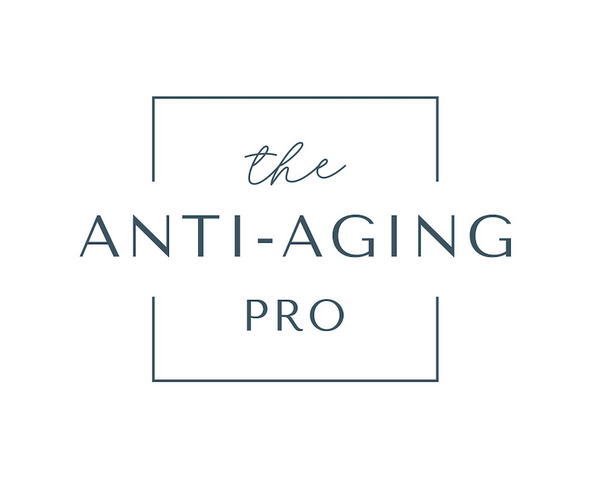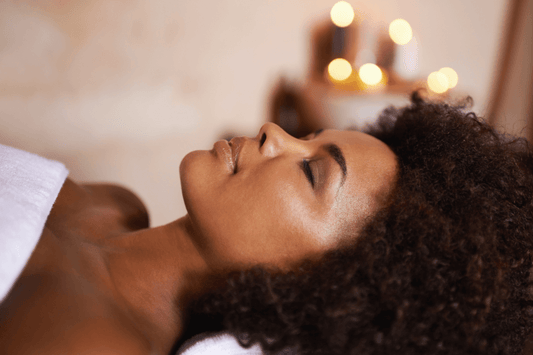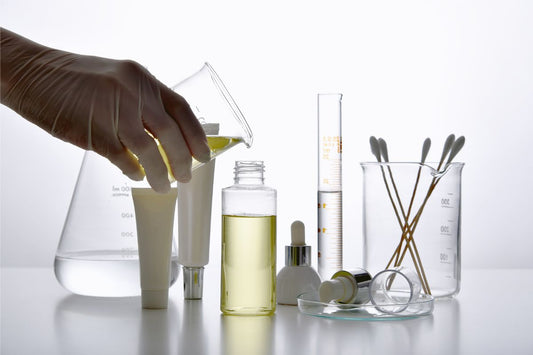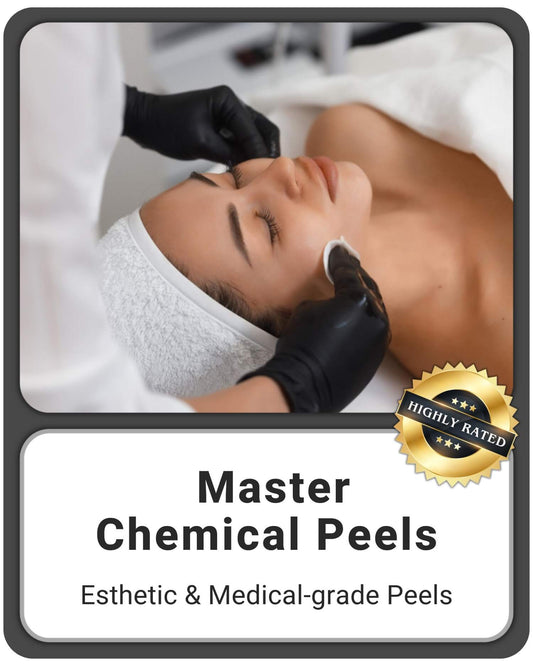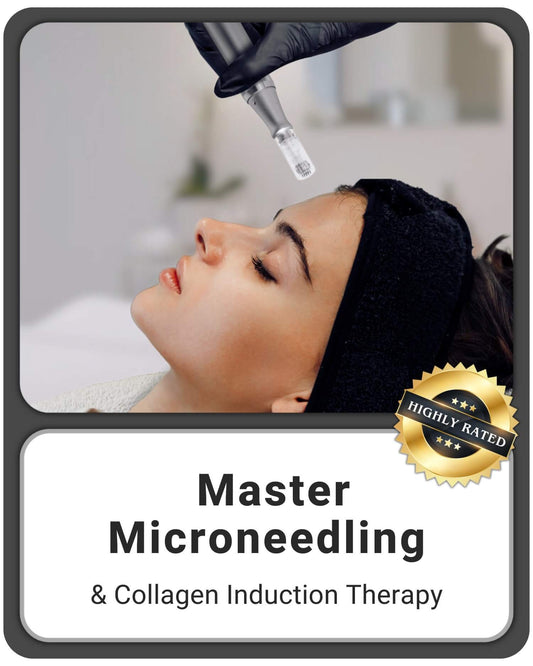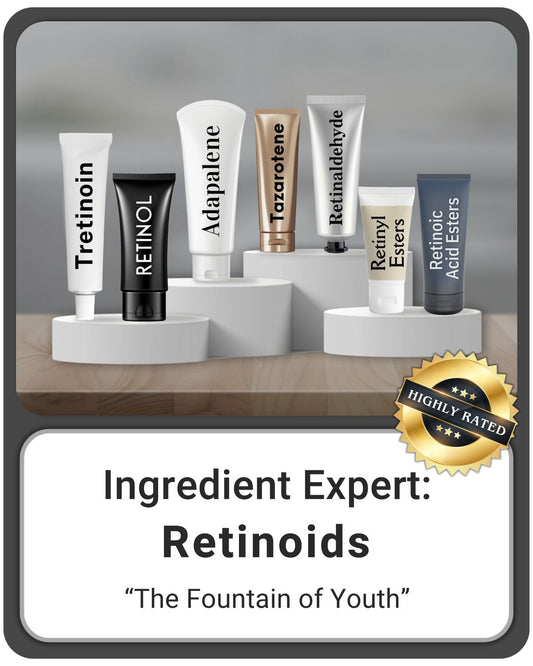
What is Slugging? Do You Need It In Your Skincare Routine?
Jen CopferShare
You’ve most likely heard of the new beauty term “slugging”, especially now that it has been trending on many social media platforms since it originally became popular as a K-Beauty (Korean skincare) trend a few years ago.
If you haven’t heard of it or if you don't know what it means, you’re in luck! If you keep reading, you’re about to learn everything you need to know about slugging: what it is, the benefits, the cons, & how to properly incorporate it into your skincare routine.
Something important to first point out is that even though slugging seems like a “new” skincare hack, it is not a new technique at all. It’s actually been around for many decades & generations and used by many different cultures, especially in Black women’s skincare routines.
It just didn’t have a catchy name until recently.
So, What Is Slugging Exactly?
Slugging is a trendy skincare term that involves applying a *thin* layer (thin is the keyword) of an occlusive, such as Aquaphor® or Vaseline®, on your face as the last step of your nightly skincare routine. It is usually worn overnight so you wake up to nourished, glowing, baby soft skin. Count me in!
An occlusive is an ointment that creates a physical barrier on your skin that locks in hydration & prevents water & moisture loss from you skin.

- Some examples of occlusives: a petrolatum ointment, petroleum jelly, a repair/healing balm, Vaseline®, Aquaphor®, squalane oil, etc.

Why Is It Called Slugging?
After you coat your face with a thin layer of an occlusive, it ends up looking shiny & slimy…which resembles the mucus & skin of a slug. Yuck, right?!

But don’t worry, it only resembles a slug and doesn’t have anything to do with the small slimy creature. This should not to be confused with another trending ingredient, snail mucin, which actually does include products extracted from an actual snail.
When Is It Beneficial to Slug?
Slugging is mainly beneficial for dry, dehydrated skin types and/or damaged skin barriers and is used to help:
- Lock in moisture and hydration
- Assist in skin barrier repair & wound repair
- Prevent water loss & dehydration from your skin
- Combat dryness & flakiness
- Optimize penetration of other skincare products layered underneath it
Something to always remember is that hydration promotes proper healing in the skin. Slugging can help repair your skin barrier by creating a hydrating & moist environment that allows your skin barrier to slowly rebuild & heal itself in these optimal conditions.
- This especially goes for controlled wounds from a TCA chemical peel as an example, and one way that slugging can be very useful during the healing process.
- It is also great to do in winter &/or drier climates or months
- It can be very beneficial to do while going through the "Retinoid Uglies" during the retinization period when first starting tretinoin or retinol.
- It is amazing to do if you have damaged (or wounded) your skin barrier from things like over-cleansing, using too many harsh or active products at once or too frequently, exfoliating too frequently, too much sun or wind exposure, etc.
- Or just when your skin needs some extra hydrating love
Have you ever put on an occlusive on your dry, chapped lips before bed and woken up to extra hydrated and nourished lips? Same idea with slugging on your face.
Caution With Oily &
Acne-Prone Skin
Believe it or not, even though it has a very greasy feel, petrolatum itself is non-comedogenic (non-clogging & non-acne causing), due to its molecular size.
However, a word of caution for acne-prone & oily skin – using an occlusive to seal in the skin is also going to seal in your sebum/oil & bacteria, which can end up causing an acne breakout.
So slugging is best for dry/dehydrated skin and not oily/acne-prone skin.
How Do You Slug?
Overnight
Keep in mind that while you sleep, your skin is in repair mode, so the popular way to slug is usually overnight.
Step 1: Cleanse your skin
Step 2: Moisturize. After cleansing, apply a nourishing serum &/or a hydrating moisturizer. Remember you will be sealing this into the skin for maximum penetration, so you want it to be nourishing and non-irritating.
Step 3: Apply a Thin Layer of an Occlusive. While the skin is still slightly damp, apply a tiny pea-sized amount of your occlusive on top.
- Remember that Less is More! You only want a very thin layer.
- Rub the occlusive in your hands or between your fingertips and then pat or gently apply on your skin.

Step 4: In the morning, cleanse your skin (use an oil-based cleanser if necessary) and do your normal daytime routine.
Cons of overnight slugging: the occlusive may get on your sheets & pillowcases while you sleep. It may leave grease marks & even stains on certain fabrics, especially silk. So, make sure to use pillowcases & sheets on the nights you slug that you don’t mind if they get stained.
Another con is that some people just don’t like the feeling of a sticky occlusive on their skin while they try to sleep.
This brings us to our 2nd method:
Short-Contact Method
This method helps alleviate the cons of the overnight method.
At least a few hours before your bedtime, follow Steps 1, 2 & 3 above.
Step 4: Slug for a few hours only and then wash off before you go to bed.
This method isn’t as effective & fast acting as the overnight method but it is still beneficial. It also won’t stain your sheets & you won’t go to bed with a sticky, slimy face.
Can You Slug Over Retinol, Tretinoin, & Other Retinoids?
I would advise against slugging over tretinoin, retinol, or other retinoids. You will only want to slug on your retinoid “off nights” and not over or on top of your retinoid. The reason is that slugging will lock in the retinoid and can potentially make the retinoid stronger, which can increase or worsen the irritation & side effects. Because of this, you will want to start off by slugging only on your retinoid off nights.
How Often
Should You Slug?
The frequency of slugging will depend on your specific skin type and the severity of your issues & concerns. It can be done several times a week to occasionally when your skin barrier just needs some extra hydrating love & healing.
Conclusion
If your skin barrier needs some extra love, whether it be from the dry winter months, damaging your skin barrier by accident, after a chemical peel treatment, or from "Retinoid Uglies" during the retinization period when first starting retinoids, slugging may be just what your skin needs for that extra boost of hydration and healing.
Is slugging something you think you will try?
